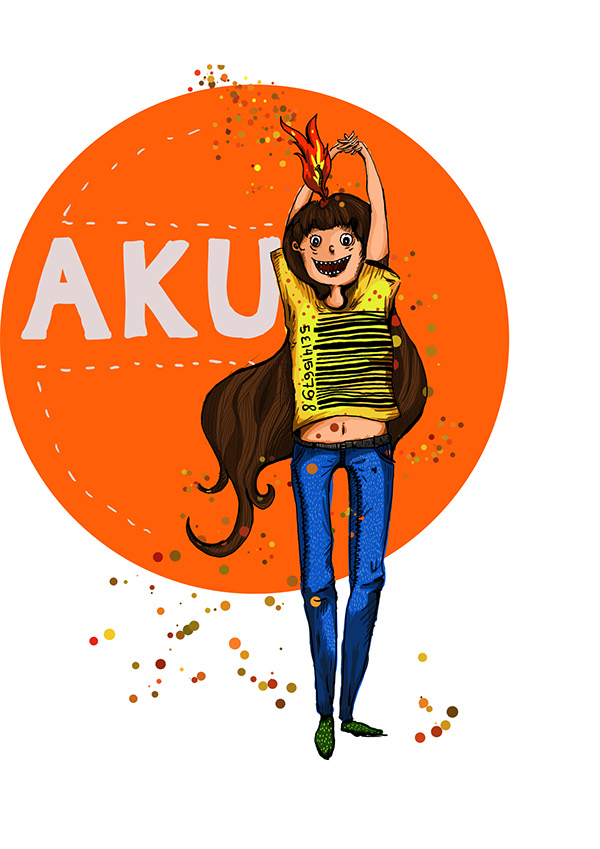Taste is a marker of social status - Digital Illustration
Bourdieu and his tastes
Hey everyone, I'm sorry I disappeared yesterday, because yesterday I followed a general stadium that was held on my campus. The theme is not far from the philosophy and social life of society. For the discussion of yesterday's peel is the thought of one of the famous philosophy that comes from french named Pierre Fellix Bourdieu about his thoughts about human consumption taste.
And this is the essence I got from attending the general stadium yesterday. Happy reading.
YEAR 2012: Korea won big.

Source google
Korean wave, a wave of Korean pop culture, spread not only in Asia, but also around the world. Korean boy band and girl band, Korean movie and Korean fashion suddenly became trend setter. All want to style Super Junior, Rain or SNSD. The peak of Korean pop culture victory in 2012 is marked by the appearance of Korean rapper Gangnam Style video clip, Psy, as the most watched video of all time on Youtube with 1 billion views. All of sudden love Korean. Korea became the mecca of new tastes.
"Why like Korean music?"
"I wonder why? Emmm, fun. Their style is cool. His clothes, his singing, his dance. It's a matter of taste as well. This is my taste. People's tastes may be different. Maybe some people do not like Korean boy bands. Or even antipathy. It's okay. The name of the taste can not be forced. It does not have to be the same."
The same question can be asked for a different matter: why love dangdut music, why love Italian food, why love Bollywood movies, why like to read Kompas, why like yoga, why like drama Korea, why love Salvador Dali painting, why love a minimalist house, why like watching a piano recital?
It's a matter of taste.
Most people accept taste as something personal, individual, private, subjective: completely personal choice. Tastes are preferences that are solely based on personal interests.
Is it true?
Bourdieu has a different opinion. Bourdieu, the full name of Pierre Felix Bourdieu. He is a sociologist, anthropologist and philosopher of France. His name is soaring because his thoughts are pithy and original.
According to Bourdieu, taste is not something natural. It is not a free "choice". It is not an individual's "prerogative". Tastes, explained Bourdieu, are social construction products that are formed, in particular, through education and nurturing. The taste, furthermore, also serves as a marker of social status.
Distinction Book: A Social Critique of the Judgment of Taste (1979), written by Bourdieu, describes how tastes are socially shaped and at the same time a "differentiator" of social status.
It's a cool book and nice to read. The thickness is not kidding: 613 pages. It includes the 10 most influential sociological books of the 20th century according to the International Sociological Association. Bourdieu utilizes hundreds of survey results, interviews, photographs and field notes. Research data ranged from 1963 to 1976. Respondents were many: 1217 people. The result: a brilliant book.
Bourdieu uses survey data and then analyzes it qualitatively. In Bourdieu's hands, his elegant, boring statistics and "dry" as if he could speak, "live" and express the social realities attractively. Bourdieu reveals the meaning behind the choice of music, dress, movies, food, magazines, furniture, cars, painting, recreation, reading, school, friendship clubs, sports to political parties, to understand tastes.

Original Illustration by me
The research method he used was interesting.
Combining two methods, qualitative and quantitative, Bourdieu based most of his analysis from survey data. Not a field study.
He is also innovative in finding data.
In one part of his research, Bourdieu features a number of photographs: landscape photographs, car crash photographs, play girl photos, pregnant women's photos, mammalian photographs, sunrise photos on the beach, snake photos, injured male photos (1979: 36) . He then asked his respondents to answer the question: "Which photo is beautiful, interesting, meaningless or bad?" From the answers given by respondents from the working class, the middle and upper classes, Bourdieu saw how the choice of tastes on a photograph was influenced by the background behind one's social class.
In another part of his research he handed me one of the same photos: an old woman's hand. The photo was deliberately cropped, headless. Next Bourdieu asked his respondents to comment. Responses to the same photo, turned out to produce different comments. Different tastes.
Bourdieu "reads" thousands of survey figures with a carefree, careful look, without foaming, while still being reflective and conscious of his position as a researcher. Bourdieu research method is later known as "reflective sociology."

Original Illustration by me
Based on survey data, Bourdieu came to a surprising conclusion. According to him, tastes are formed almost beyond the control of the individual, moving below the level of consciousness and language through the relationship between habitus, capital, and field. Habitus is a set of perceptions, thoughts and actions gained through a way of being, a habitual state, which he calls "disposition" (1977: 214). Disposition becomes a kind of tendency, tendency, someone. Habitus is primarily shaped through educational and nurturing processes. It also influenced the origin of family and social class. Habitus, on the one hand, Bourdieu, is an action-forming structure, which determines the choice of taste. On the other hand, habitus is also a structure formed by the choice of one's taste. In other words, differences in habitus distinguish tastes and simultaneously strengthen the appetite.
In addition to habitus, taste is also influenced by the amount and composition of capital. Capital, unlike Karl Marx, for Bourdieu not only refers to economic capital (capital or money). For Bourdieu, capital can be cultural capital (education, intelligence, speech, dress style, physical appearance), social capital (network, friends, colleagues, clubs) and symbolic capital (painting, titles, titles, medals, awards). The taste, says Bourdieu, is influenced by how much economic, cultural, social and symbolic capital a person possesses, and how the four compositions of capital are. A person who has little economic capital, cultural capital, social capital and symbolic capital (working class), for example, has a different appetite with someone who has more capital with a complete composition (the class of capital owners).
Tastes are also influenced by the field or the social arena. The social arena is the setting or setting where one's social position is. The social arena is created through the process of interaction between the habitus and the capital possessed by the individual. Following Max Weber, Bourdieu rejects the traditional view of Marxism which sees society in a hierarchical dichotomy, based on class status (based on proprietary economics): the bourgeois versus proletarian class. Bourdieu prefers to use the term class fraction, to explain how classes in society, even within the same social class, are maneuvering in the social arena for mutual control. Different social arenas create different tastes of choice.
Original Illustration by me
Following Bourdieu, contrary to most people's views, taste is not something "freely chosen." It is not something personal, individual, private, subjective. The tastes of the Korean flavors, the taste for Indian films, the appetite for organic food, the appetite for indie films, the taste for football, golf or fishing, and the tastes of whatever, Bourdieu's node, is always the product of the interaction between specific habits, capital and social arena .
Tastes are "formed", rather than accepted. It is a product of social interaction and construction, rather than individual product preferences. It becomes a marker of social orientation, "a sense of one's place", rather than a personal orientation guide.
Well, that's a bit of the essence that I caught from attending a general stadium that was held at my campus yesterday. Hope you guys like this short article :)
Thank you for visiting my blog and reading my post. I hope that you learned something useful from this post and you can enjoyed. God Bless You!


Well-structure thoughts and your digital illustrations are great. Hope you could show us tutorial of that in the future. :D
With my friend happy, I will share his tutorial for next time.
A very build input, thanks :)
You've received an upvote from @slothicorn! Click Here to Learn More
(@ghulammujtaba)
Thank you for all the support you have provided, I am more excited to go through the day to keep working. @slothicorn you are the best!
Hello! I find your post valuable for the art community! Thanks for the great post! ARTzone is now following you! ALWAYs follow @artzone and the artzone tag, and support our artists!
You are the best @artzone! thank you :)
Hello @mariajunia, thank you for sharing this creative work! We just stopped by to say that you've been upvoted by the @creativecrypto magazine. The Creative Crypto is all about art on the blockchain and learning from creatives like you. Looking forward to crossing paths again soon. Steem on!